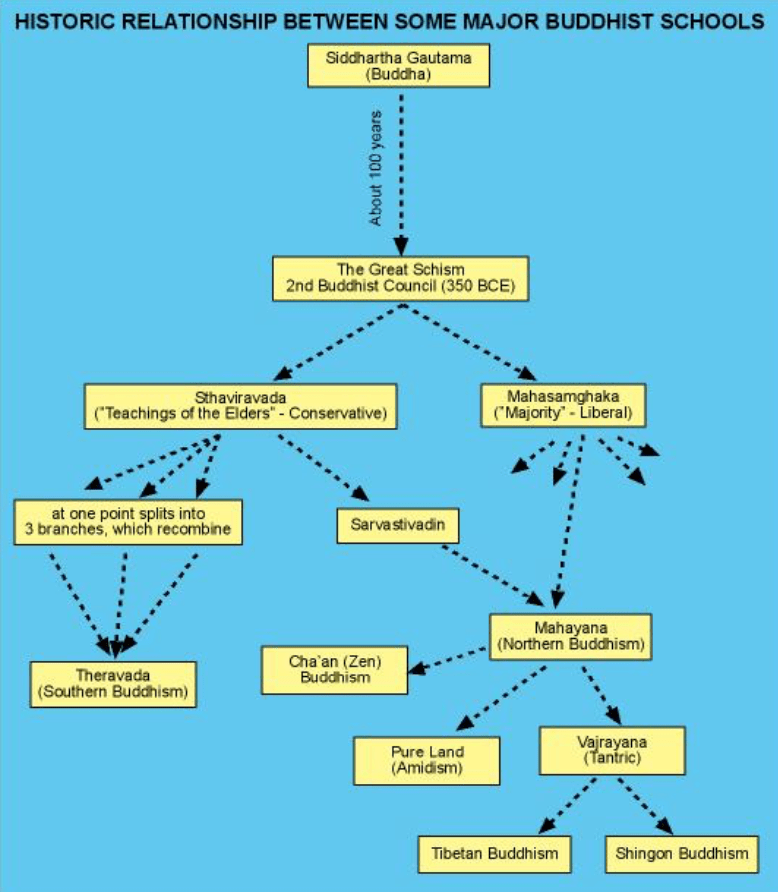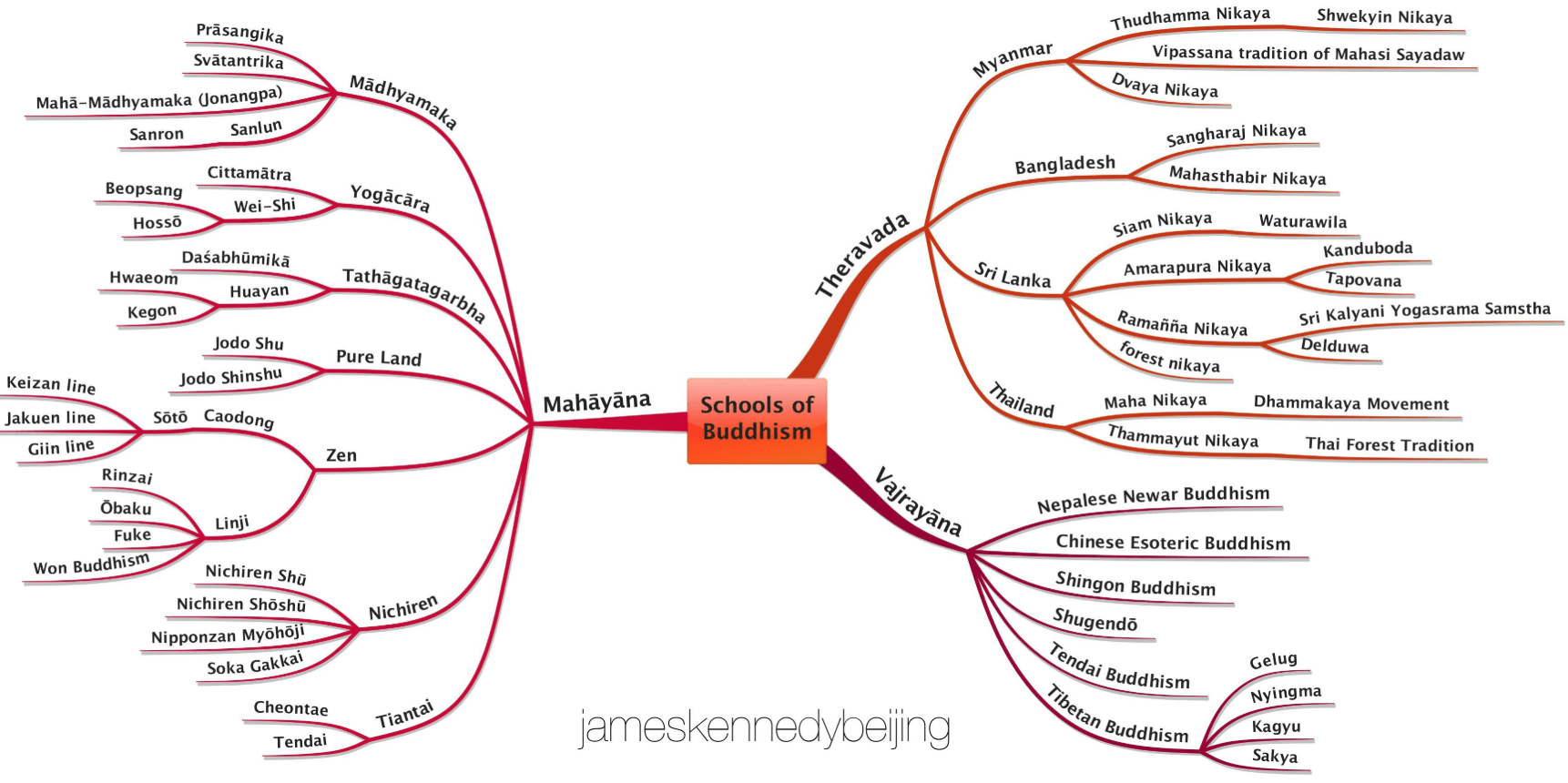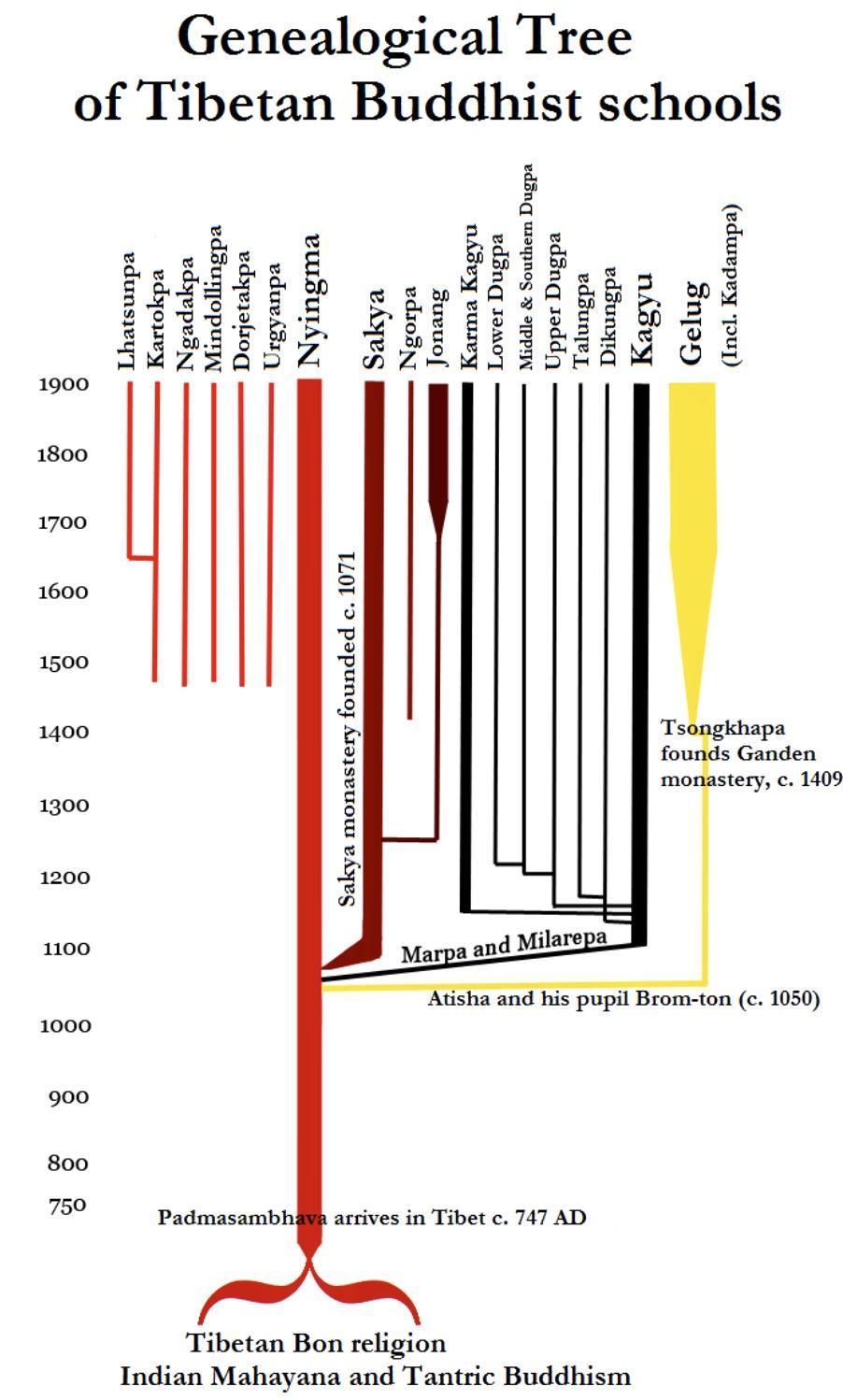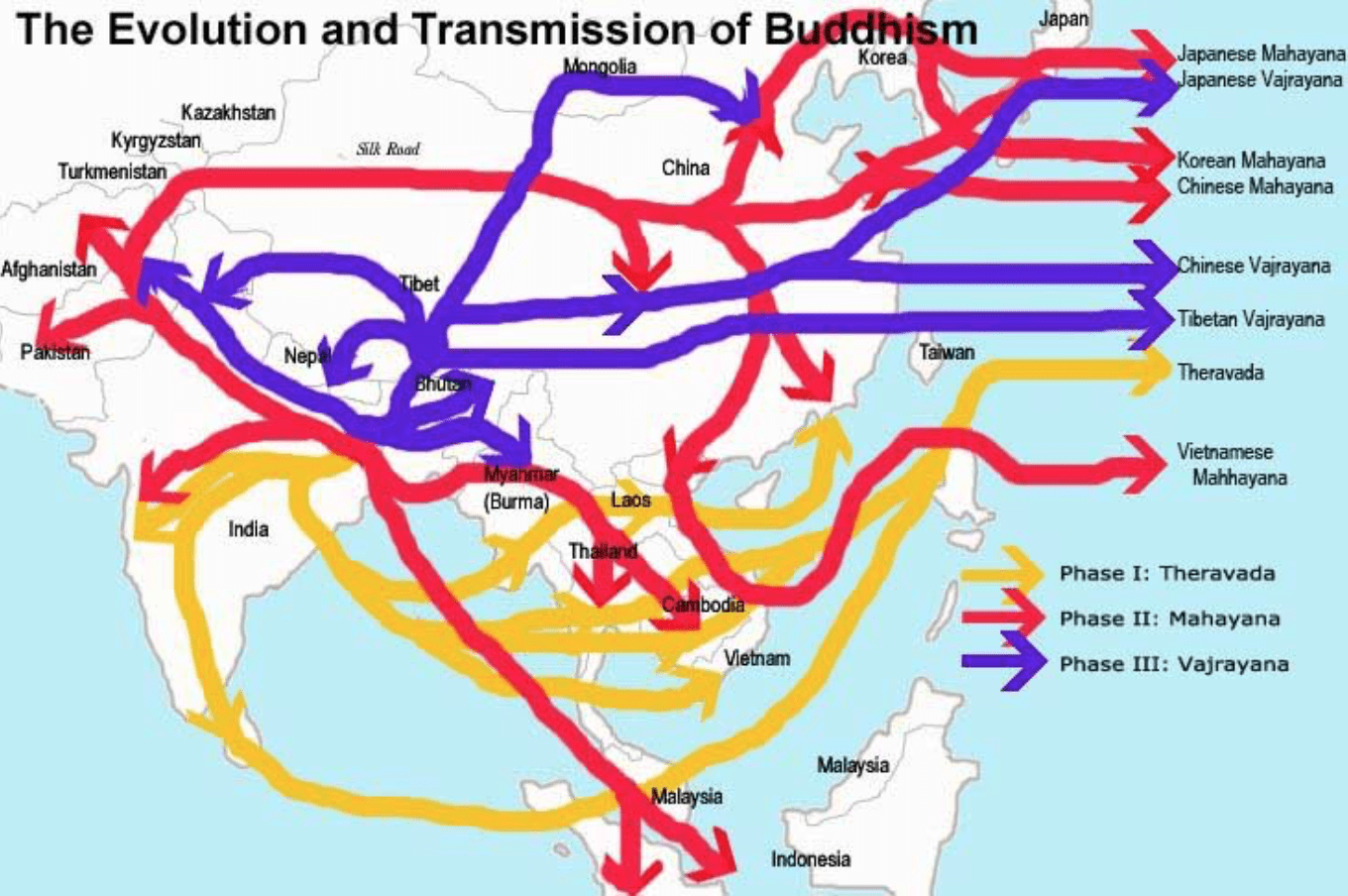We took a trip to Lumbini. It’s an eight-hour drive from Kathmandu. Yep, we left at 4am with the Lama, his daughter Baby, myself, and Lama’s trusted driver Manbadhur. I didn’t know what to expect. It was an amazingly beautiful and surprising trip.
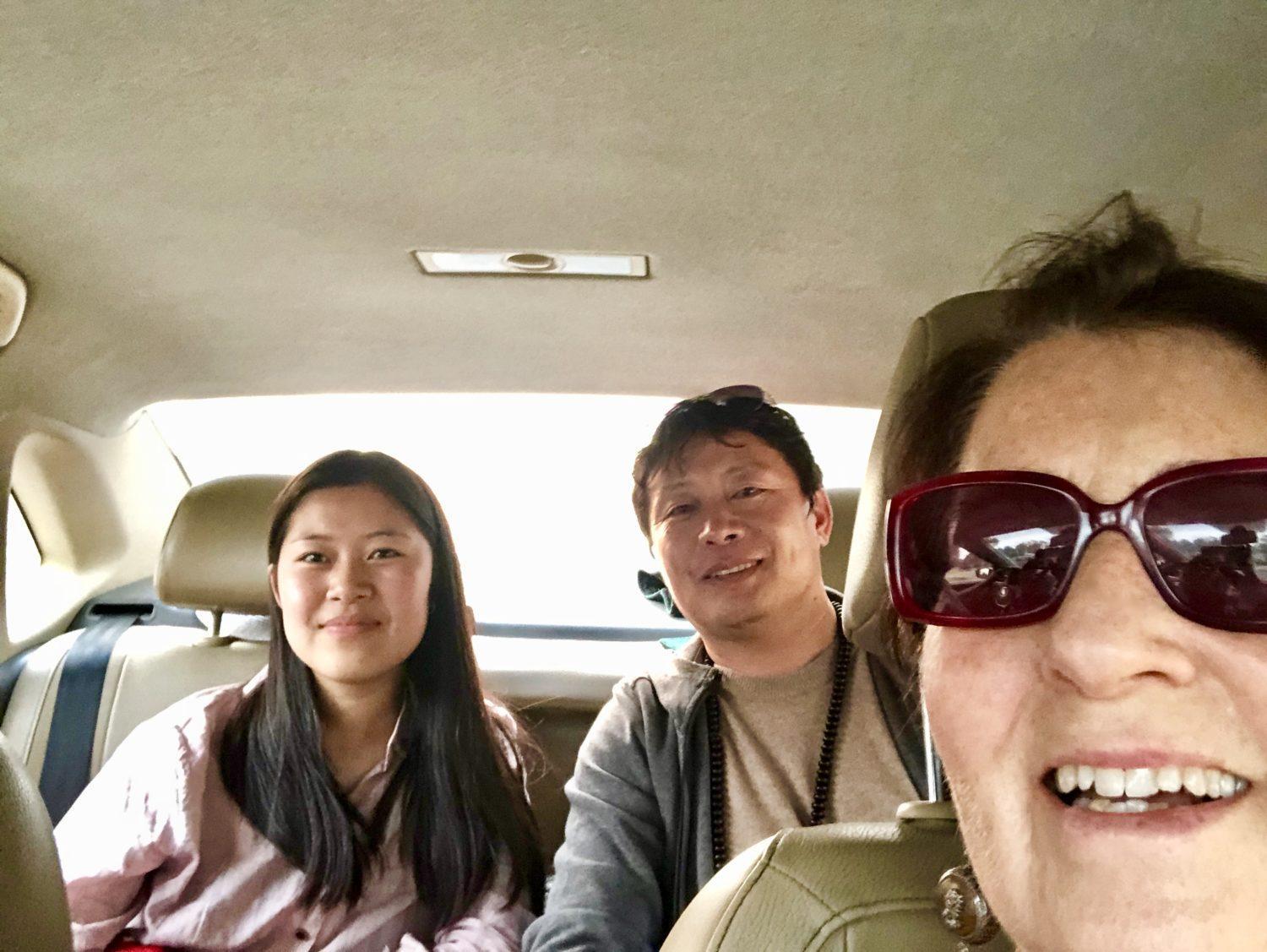
Yep, it was 8-hours to Lumbini and 8-hours back. Fortunately Manbadur’s car is comfortable, and he’s an excellent driver.
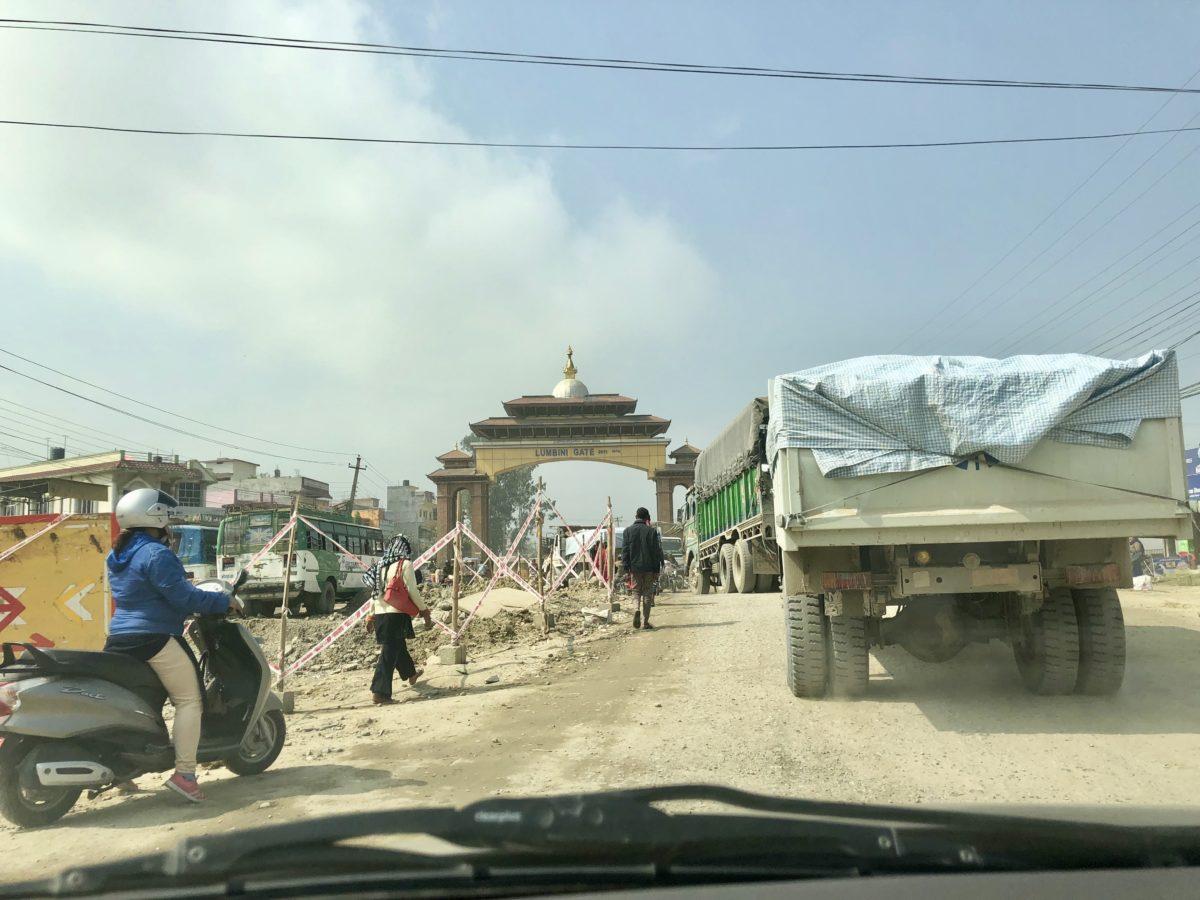
The drive through the Nepal countryside was dusty and dirty. Finally we reached the gate to Lumbini, also dusty and dirty.
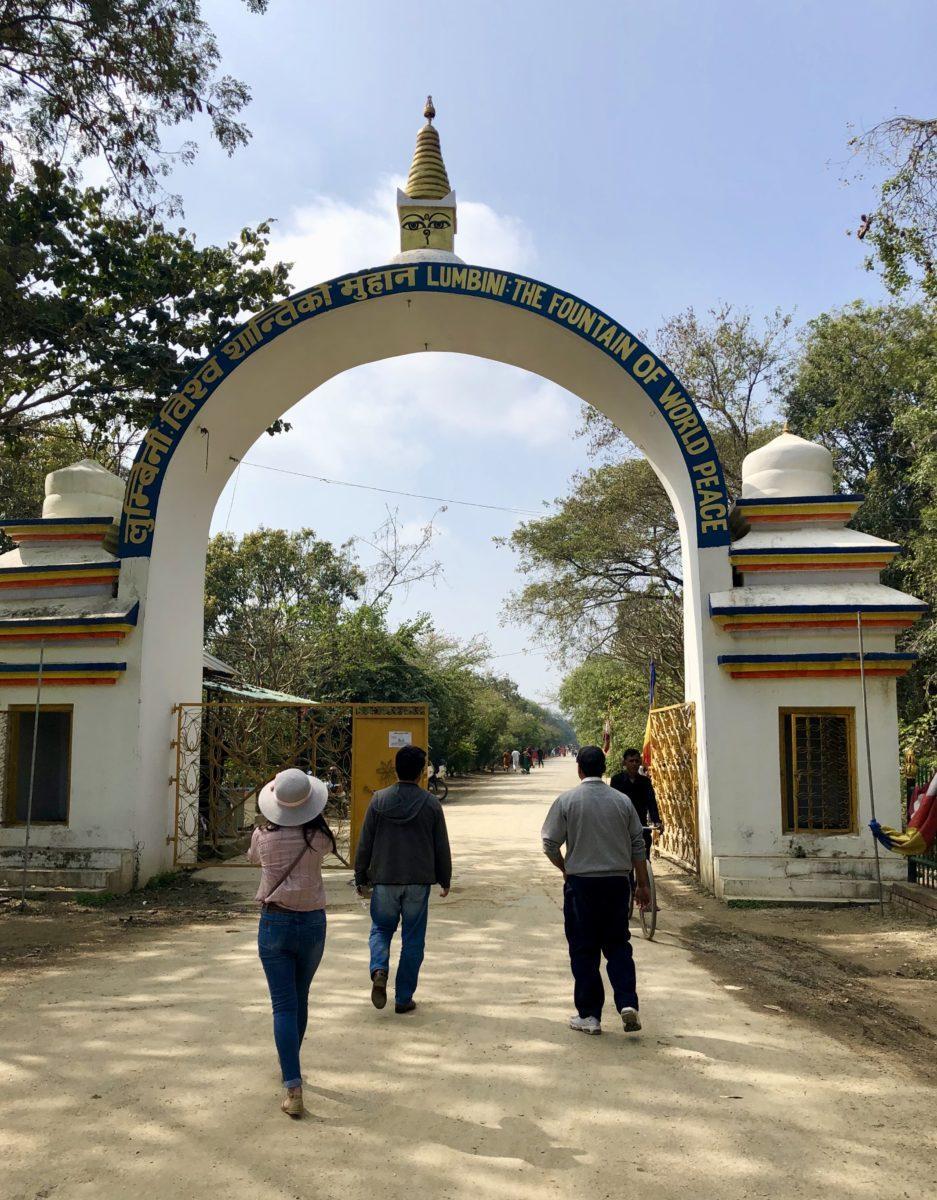
But once we entered the arches into the site of the Buddha’s birthplace at Lumbini, it was totally beautiful.

First we visited the Mahadevi temple.
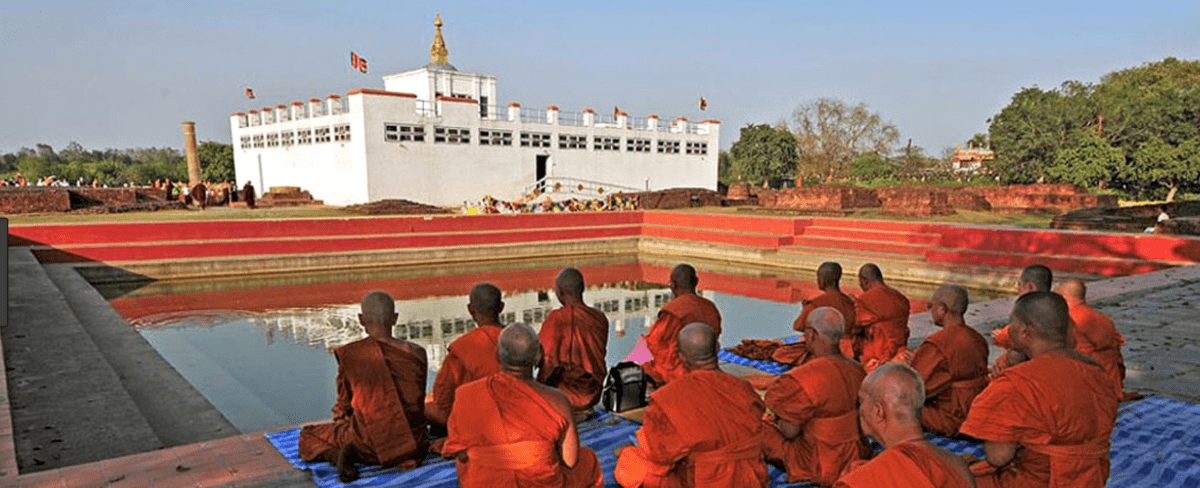
The Mahadevi Temple was the Queen mother’s palace where she gave birth to the Buddha in the 5th or 6th century BCE. Many visitors from all lineages of Buddhism were there.

Inside the Mahadevi temple no shoes or talking is allowed. Many visitors were respectfully quiet. We offered katah scarves and money and waited in line for our turn to see the center of the shrine. The palace has fallen apart, and bricks are clearly very old and worn.
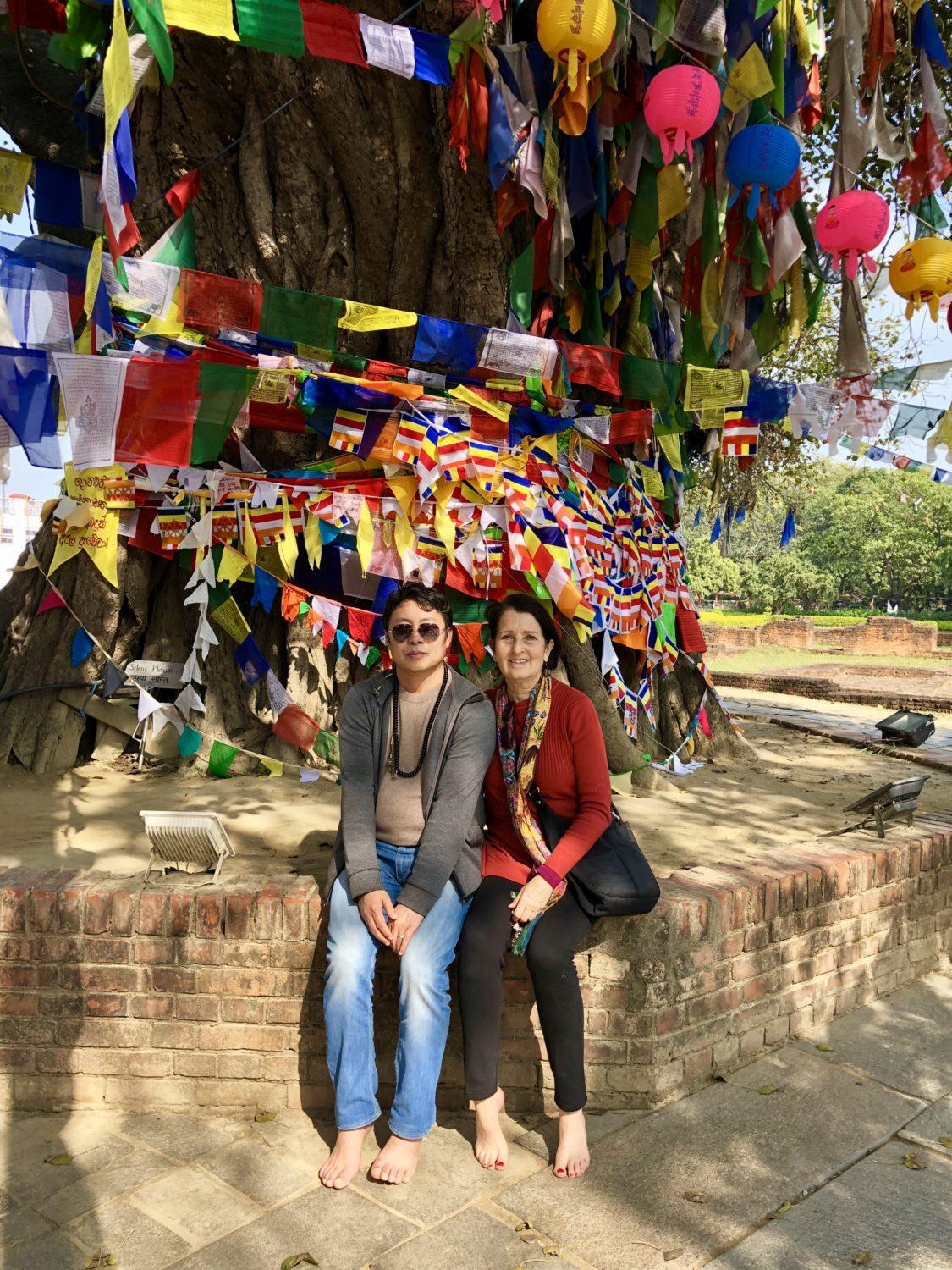
Behind the Mahadevi temple is a huge bodhi tree decorated with prayer flags, that the Buddha’s mother is said to have rested.
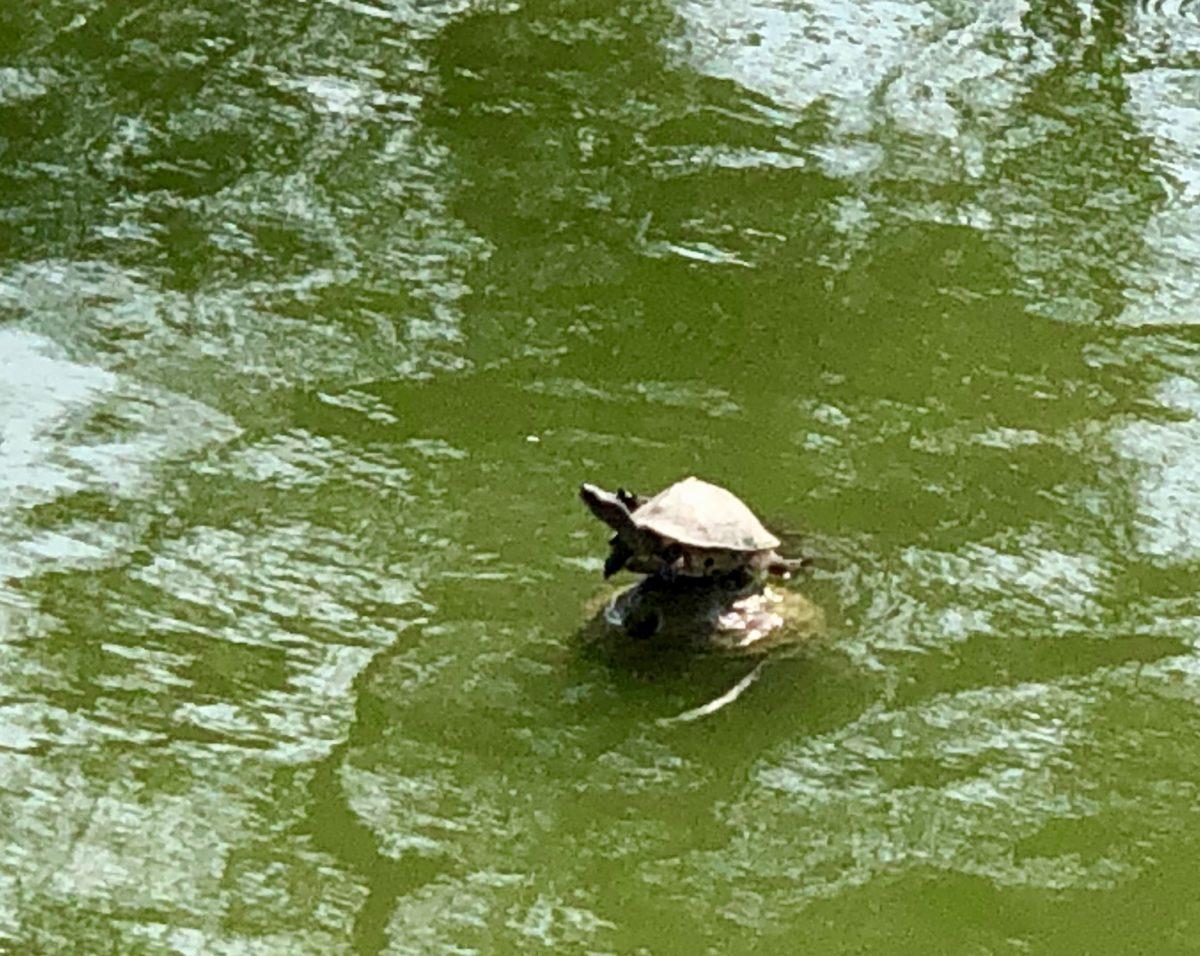
A turtle resting in the sun at the Mahadevi Temple.
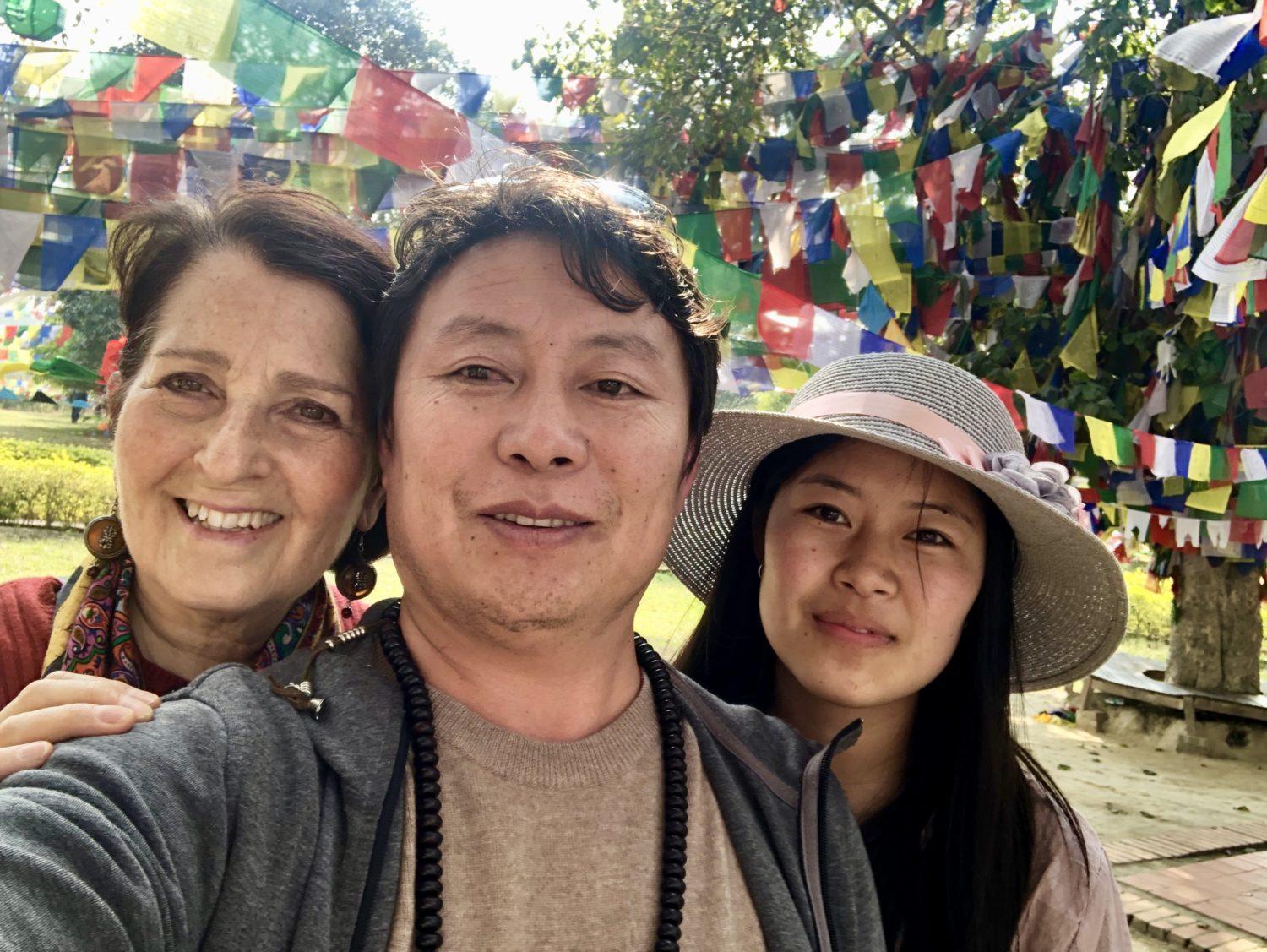
The area around the bodhi tree is very beautiful. Lama snaps a family photo.
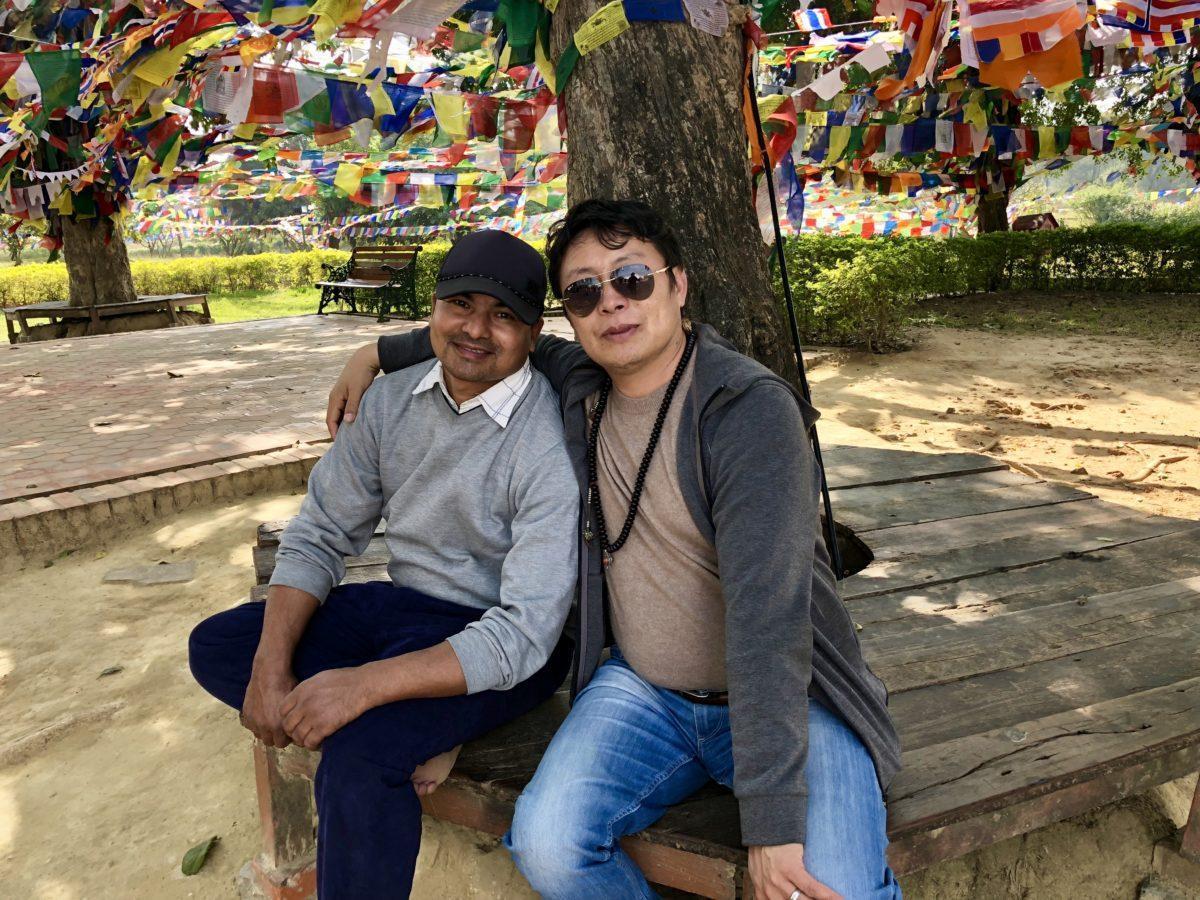
The Lama with his friend and driver Manbhadur, in the garden of the bodhi tree.
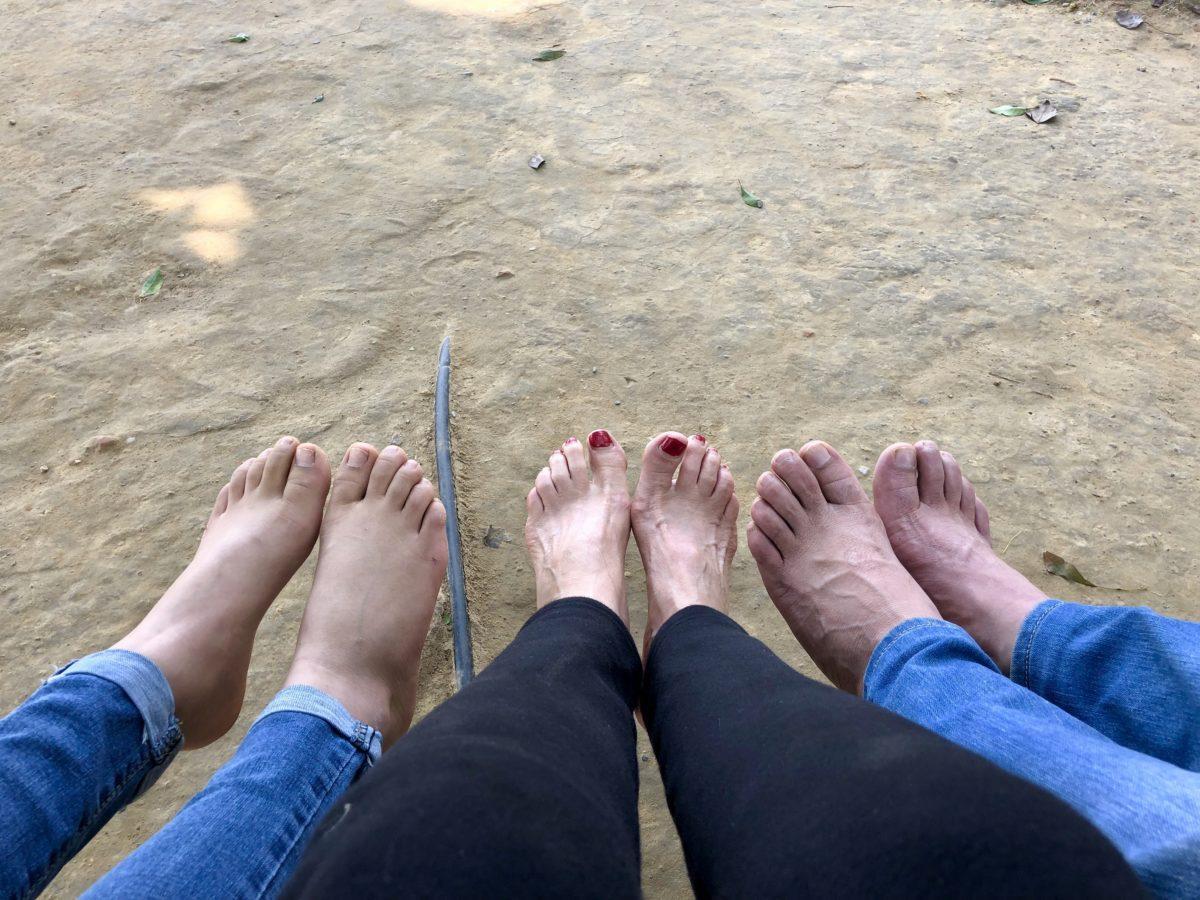
Everybody was barefoot. We had to remove our shoes in the shoe pavillion before entering. Everything was orderly and clean.
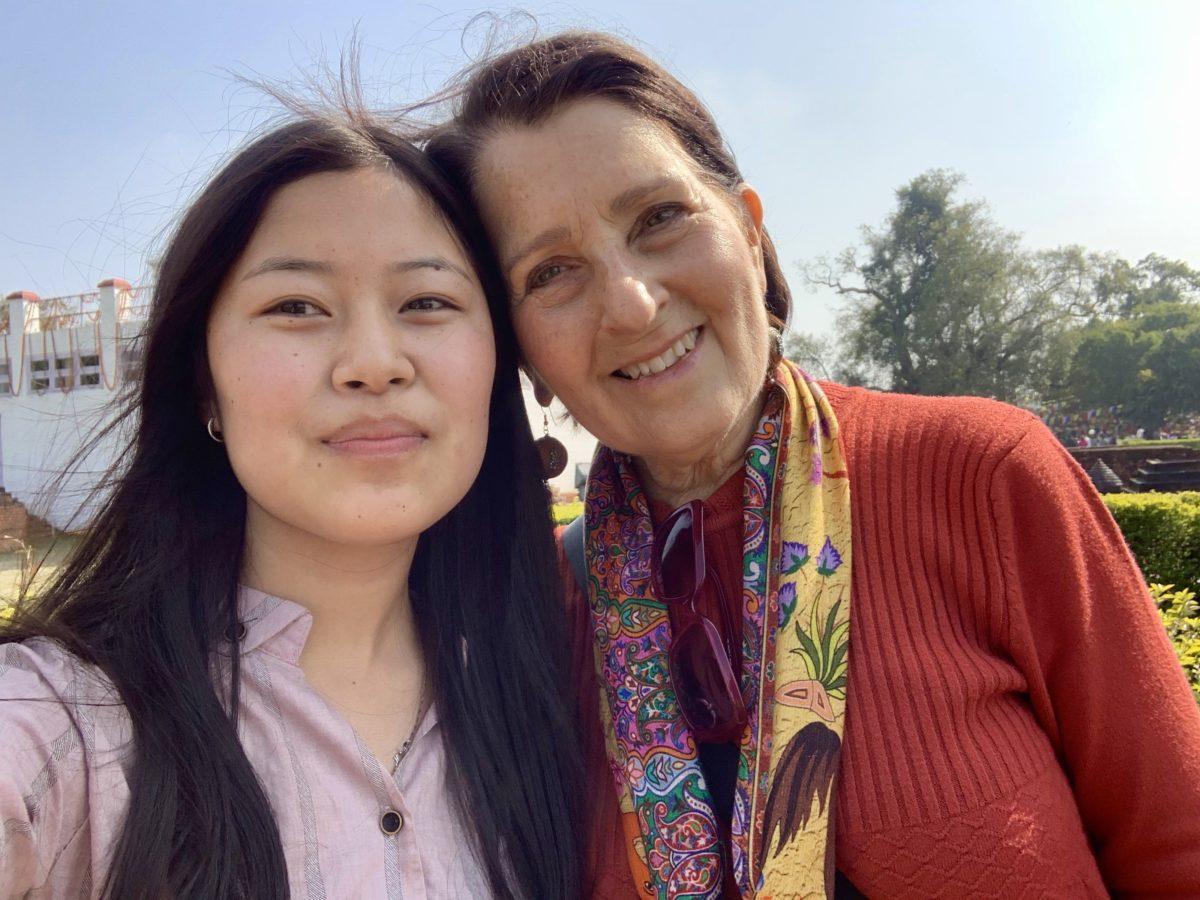
A peaceful moment with Baby at the Mahadevi Temple.
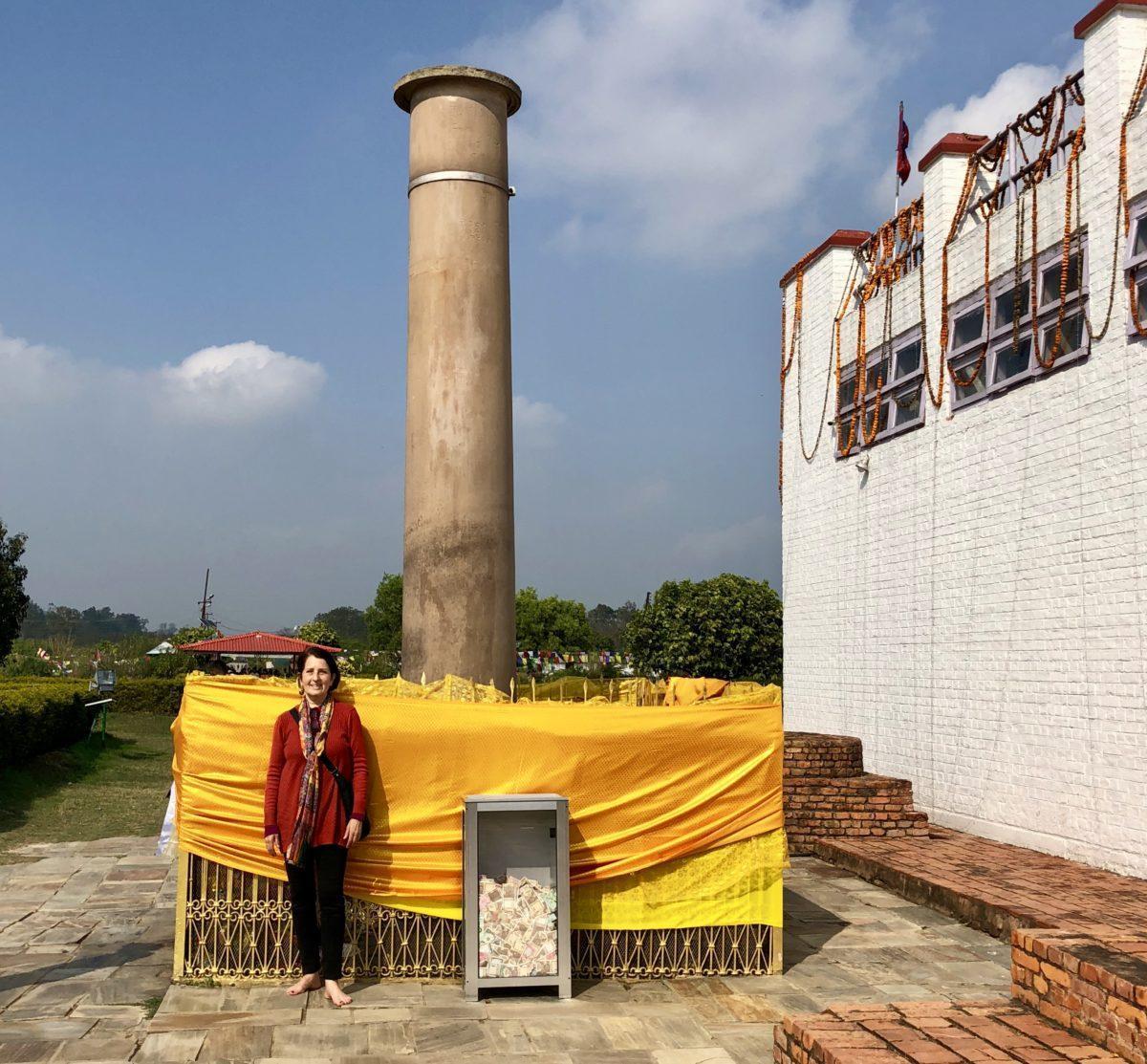
This is the famous pillar built by King Ashoka in the 3rd century CE, to commemorate the Buddha’s birthplace.
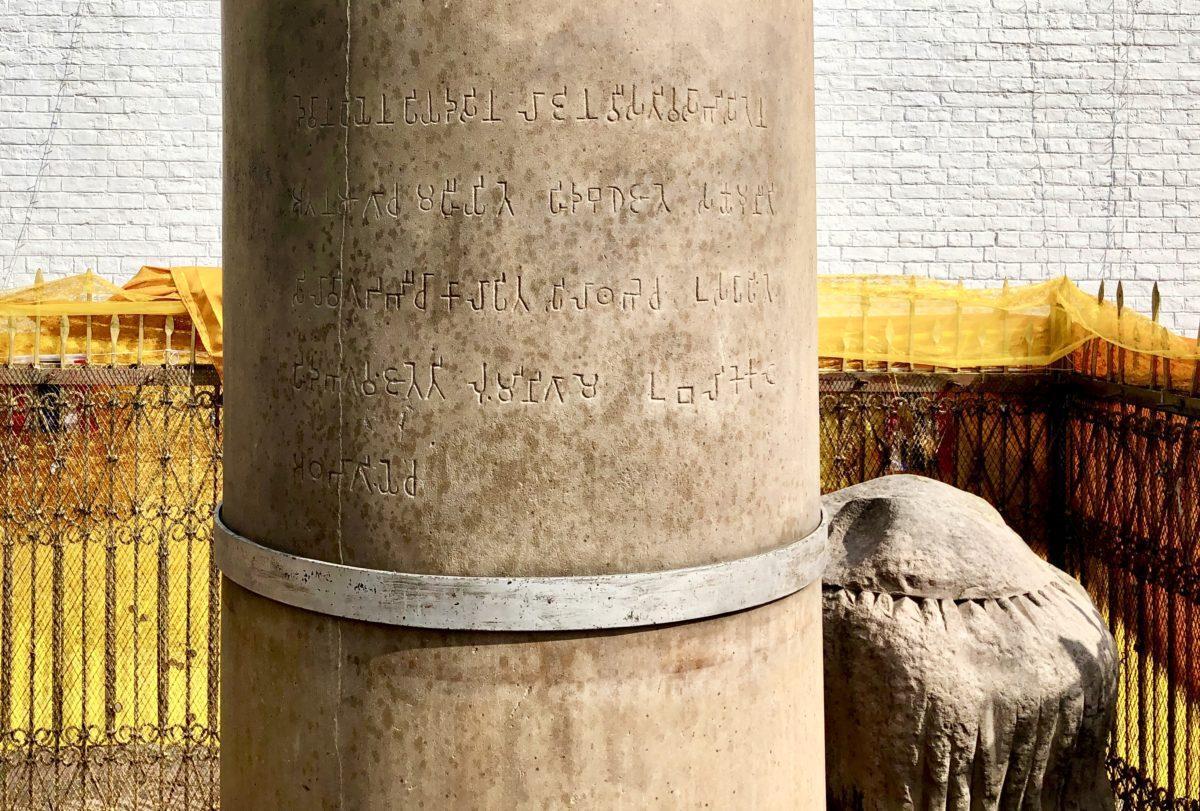
The Ashoka pillar is incribed with words in the Pali language in Brahmi script.
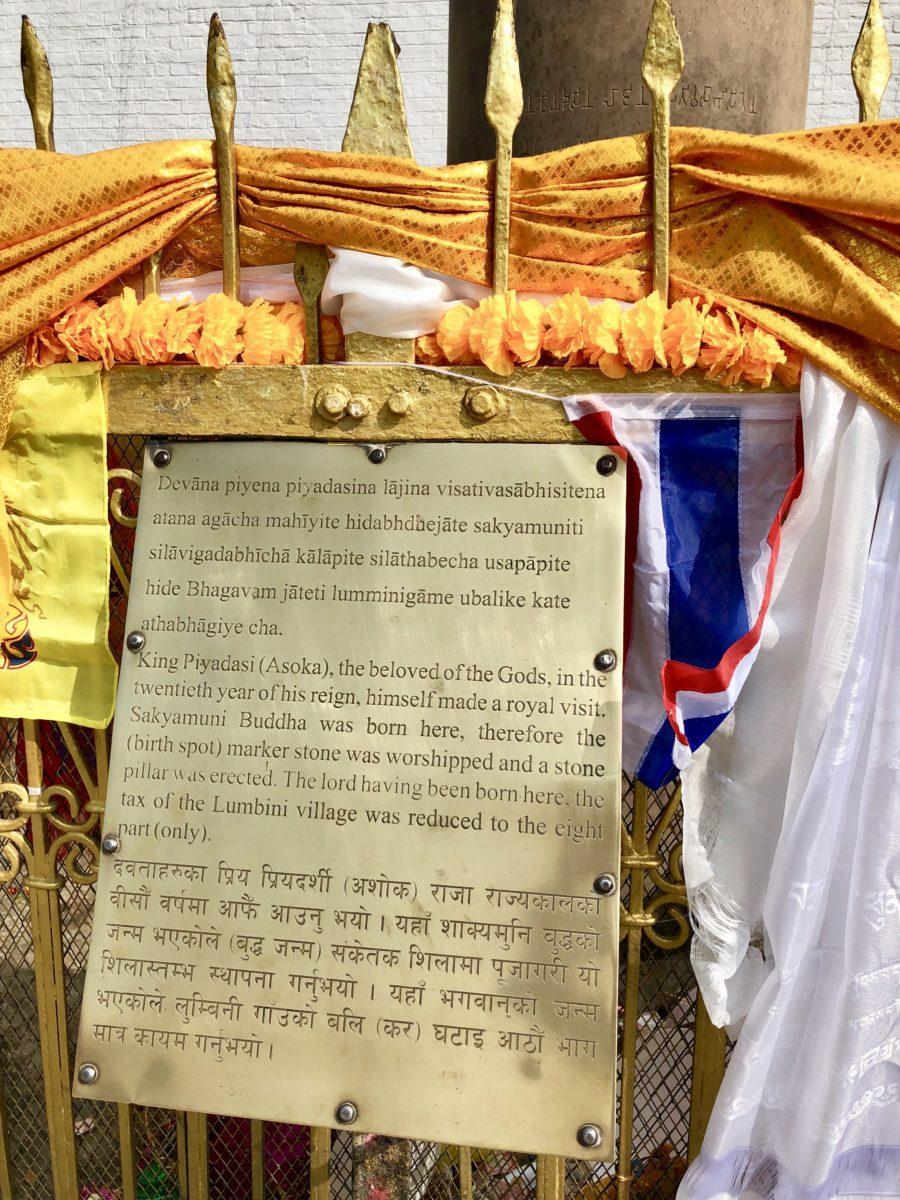
This is the translation of the inscription on the pillar.
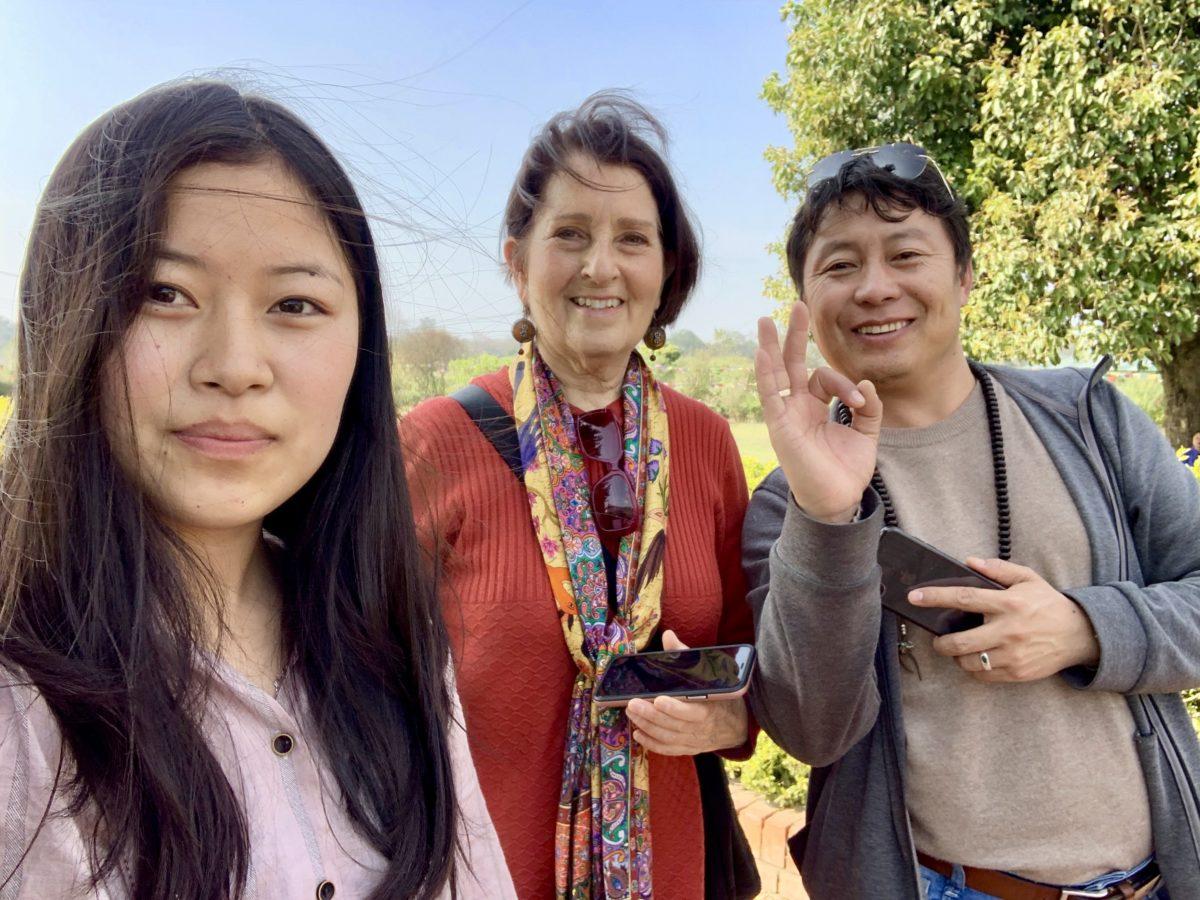
We walked around the grounds.

A group of monks rest on the grass.
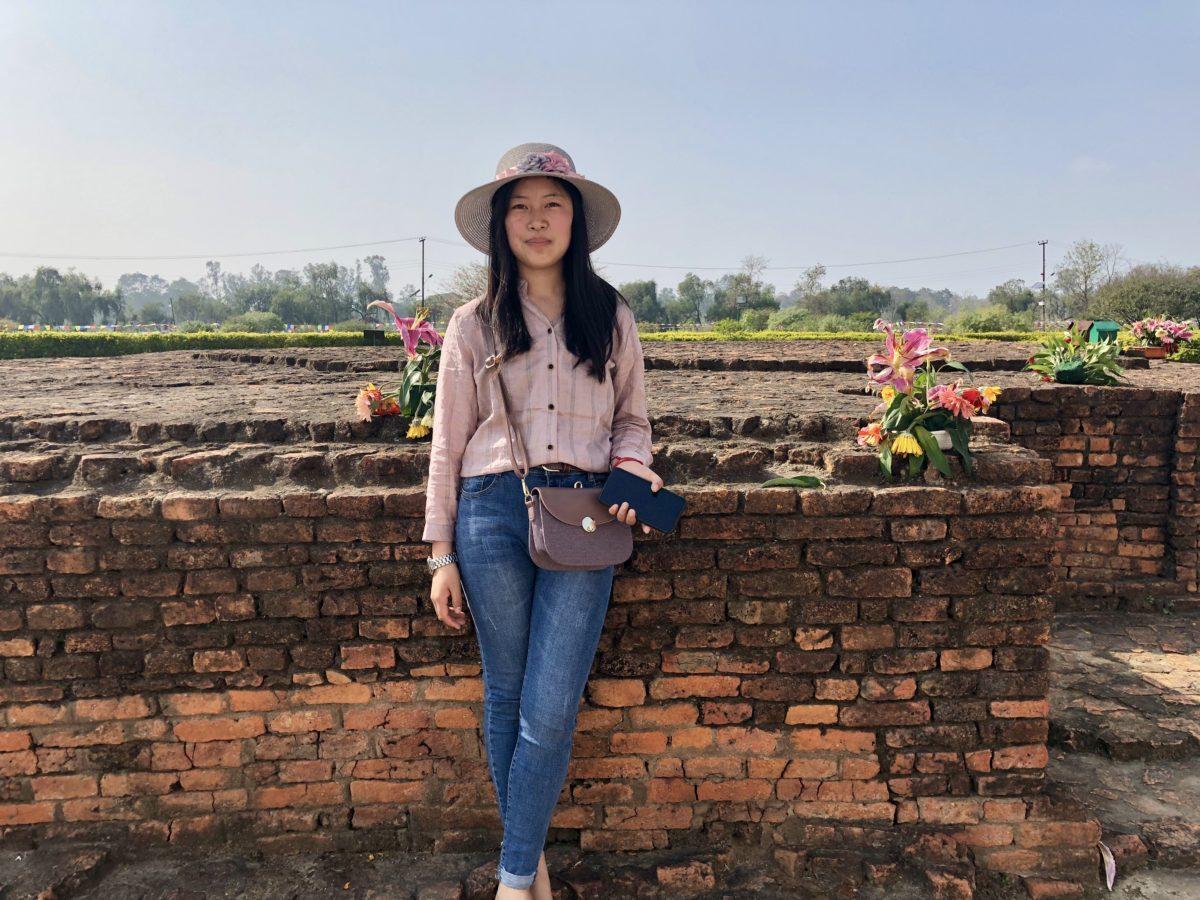
Baby stands by the ruins of the Mahadevi temple.
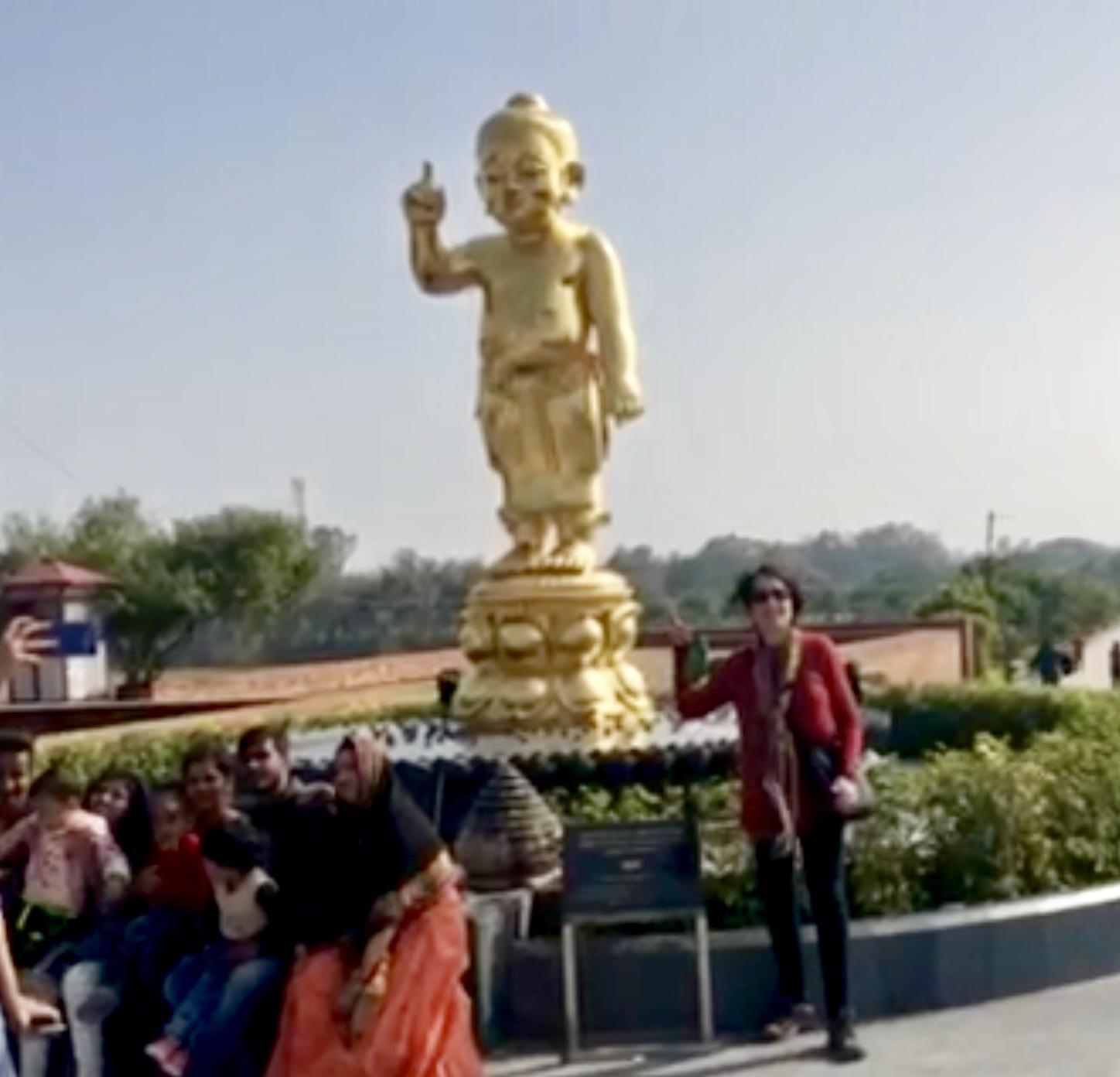
This is a statue of the Baby Buddha, donated by Thailand.
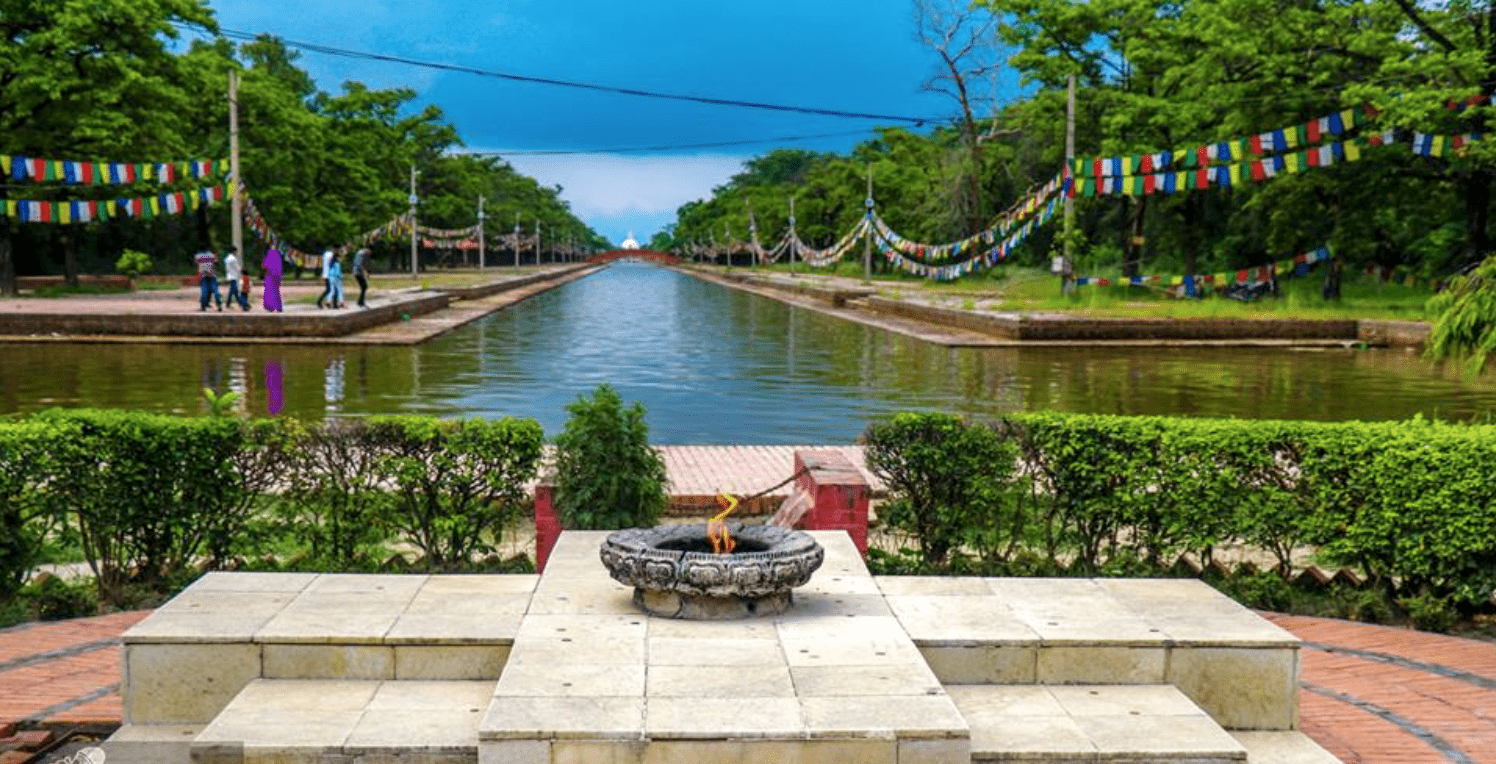
We visited the pools of water where Lama took Baby for her first boat ride.

Lama is ready for his boat ride.
Many Buddhist Temples in Lumbini
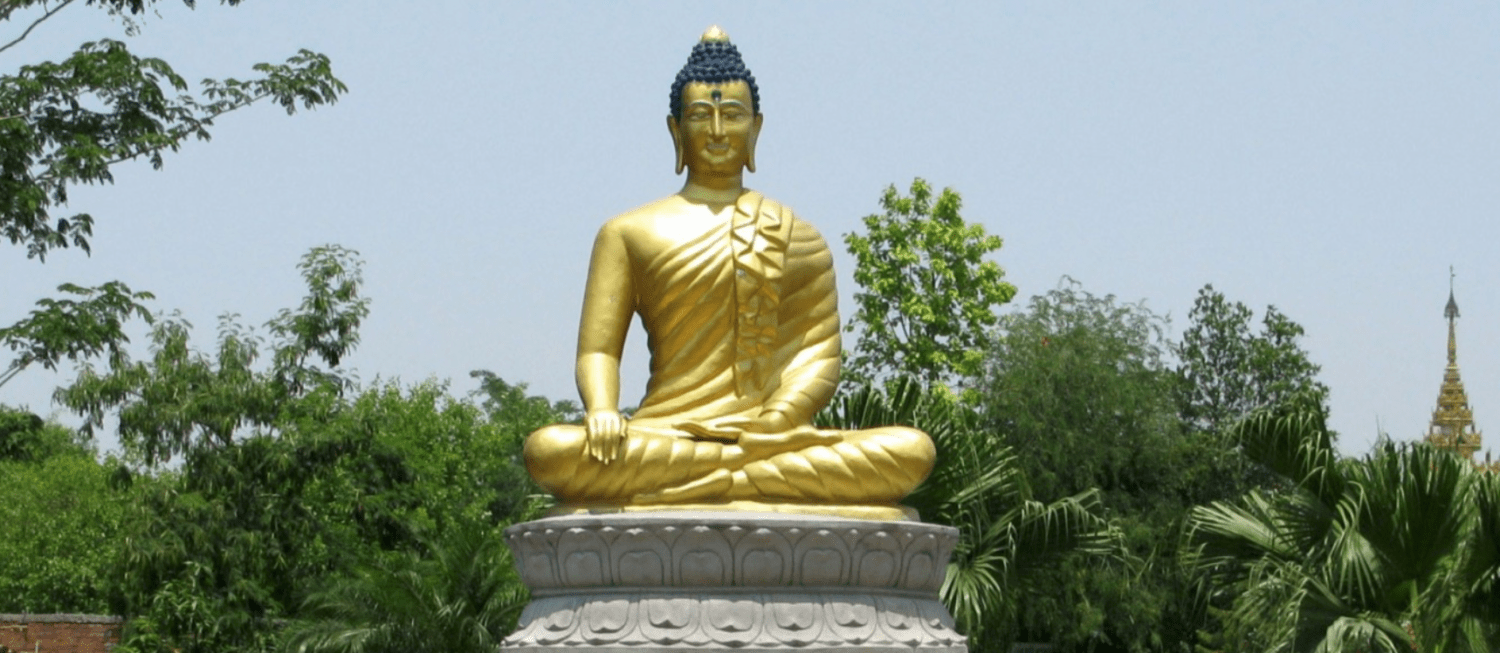
Presently, there are 32 Buddhist monasteries and temples in the Lumbini area. Billions of dollars have been invested by international banks and various governments, to make the entire Lumbini area beautiful for visitors. Every monastery in Lumbini has its own unique cultural traditions and architectural features that attract visitors from around the world. Here are a few of the other monasteries there.
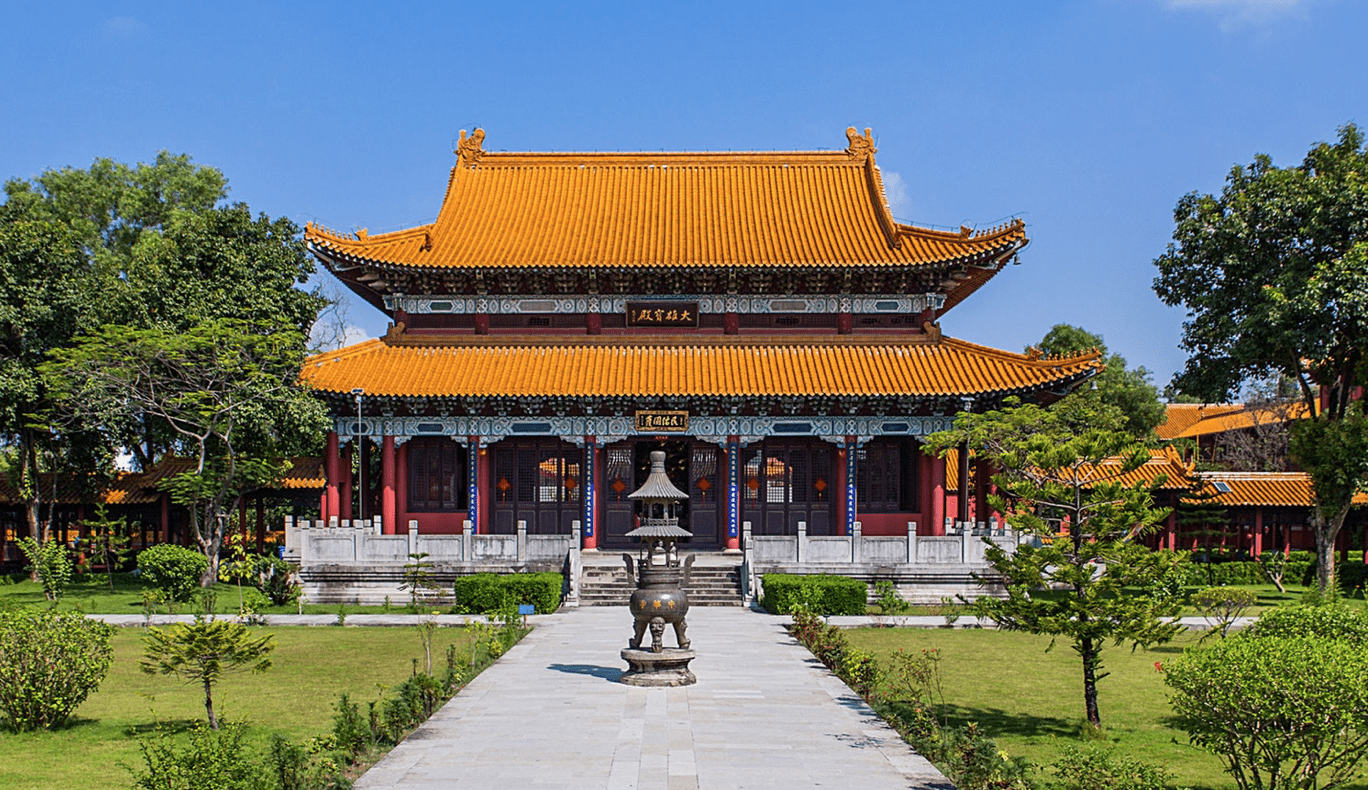
The Zhong Hua Chinese Buddhist Monastery is one of the most impressive structures at Lumbini. Reached through a gateway flanked by dogs of Fo, the elegant pagoda-style monastery looks like a small Forbidden City. Its perfectly manicured internal courtyard is an oasis of peace.
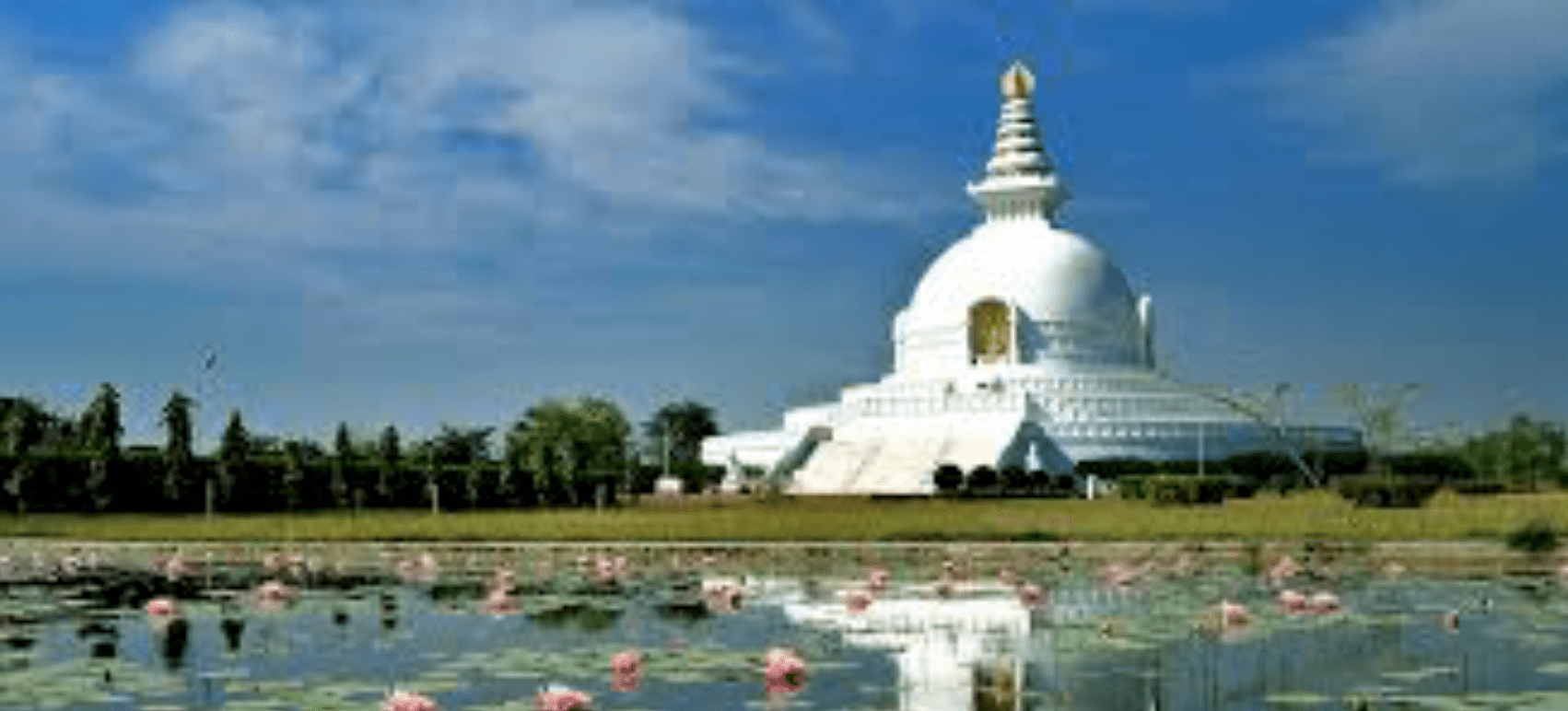
The Japanese White Temple.
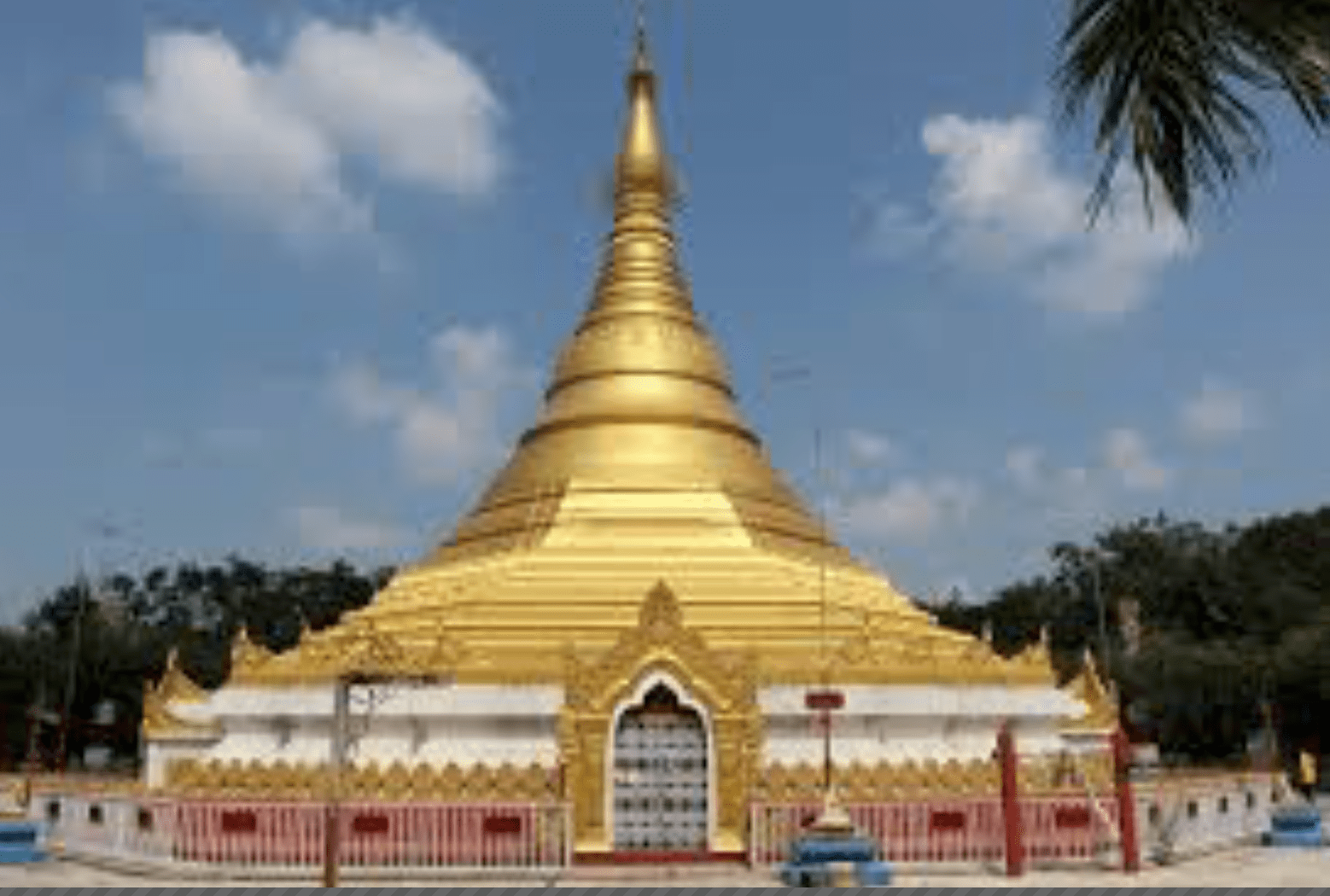
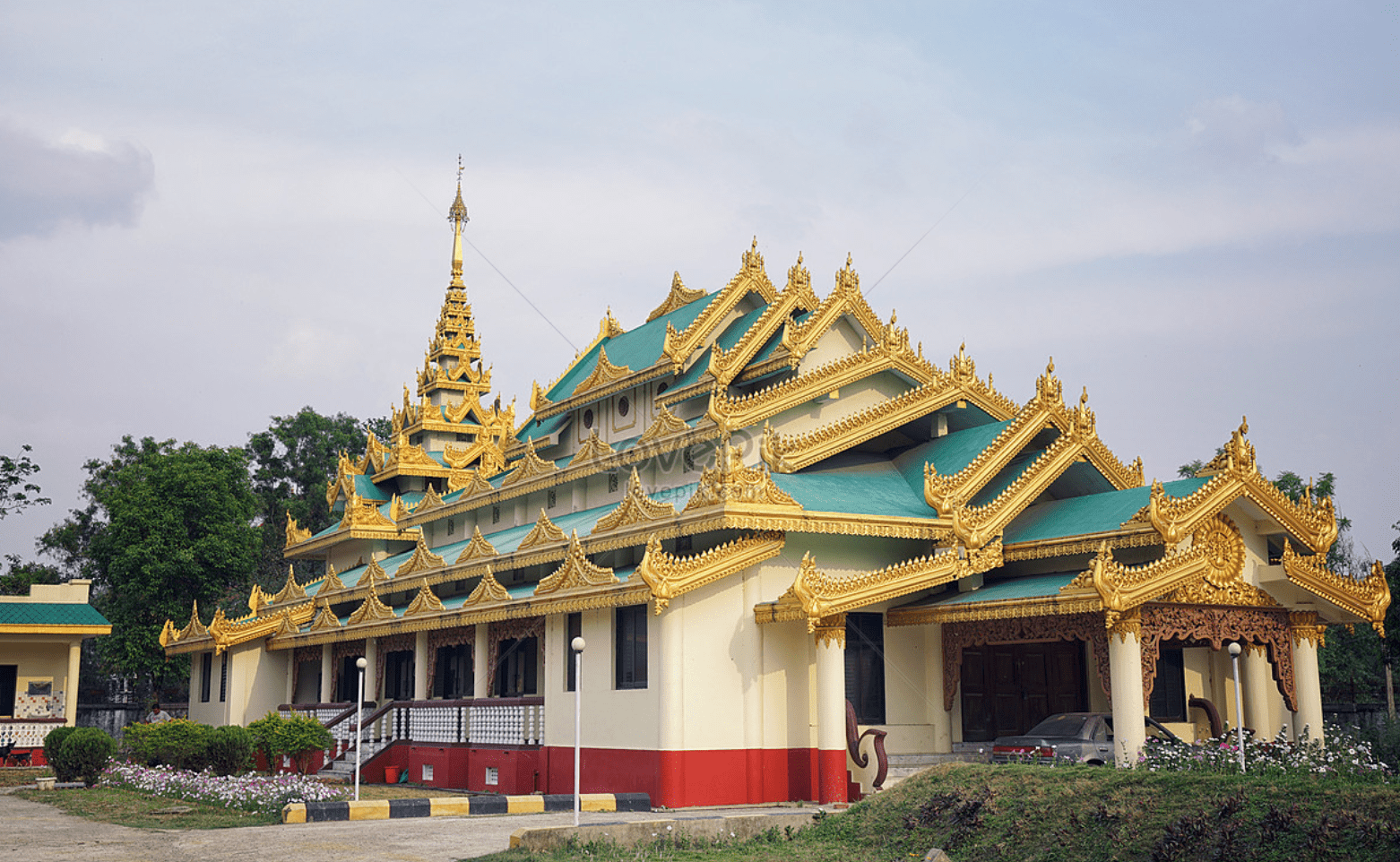
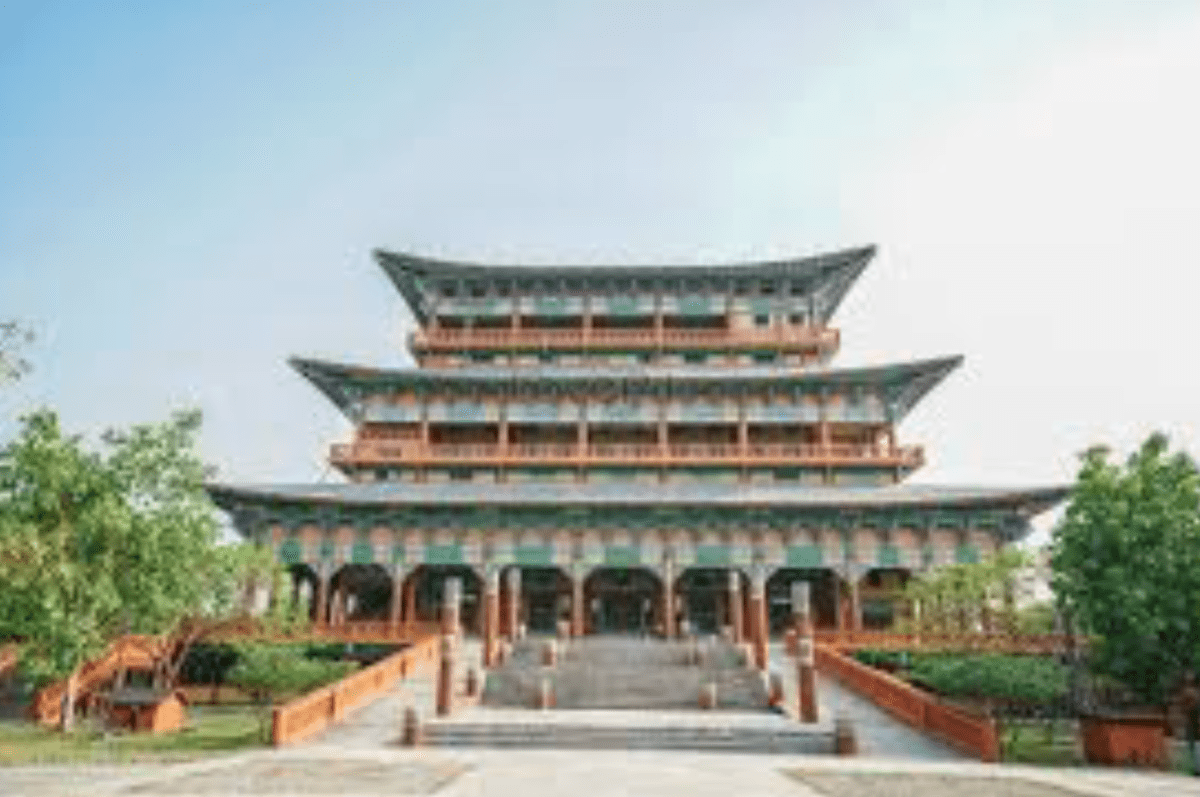
This is the Dae Sung Shakya Korean Temple.
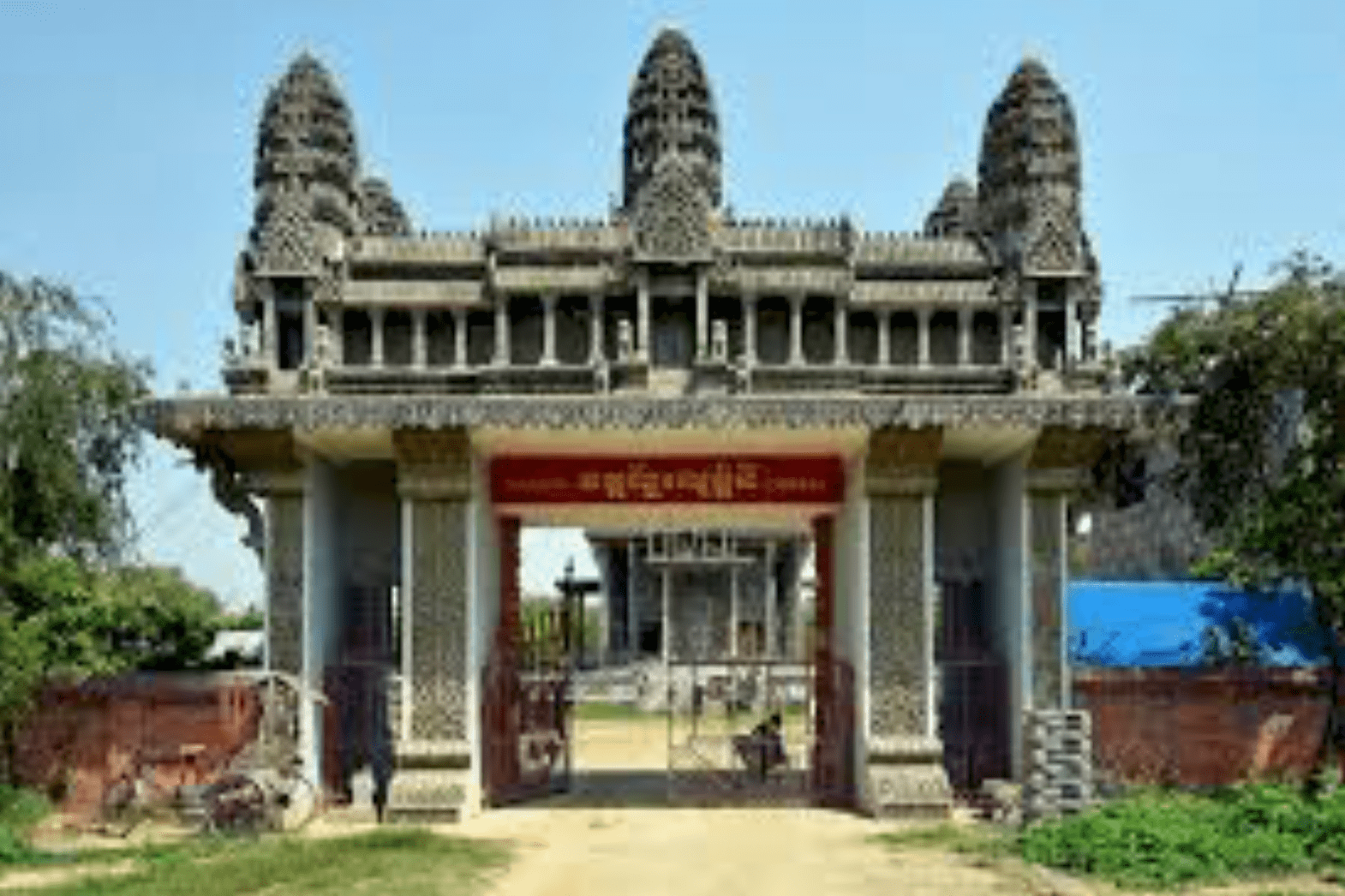
This is the Cambodian Temple, a Buddhist pilgrimage site in Lumbini.
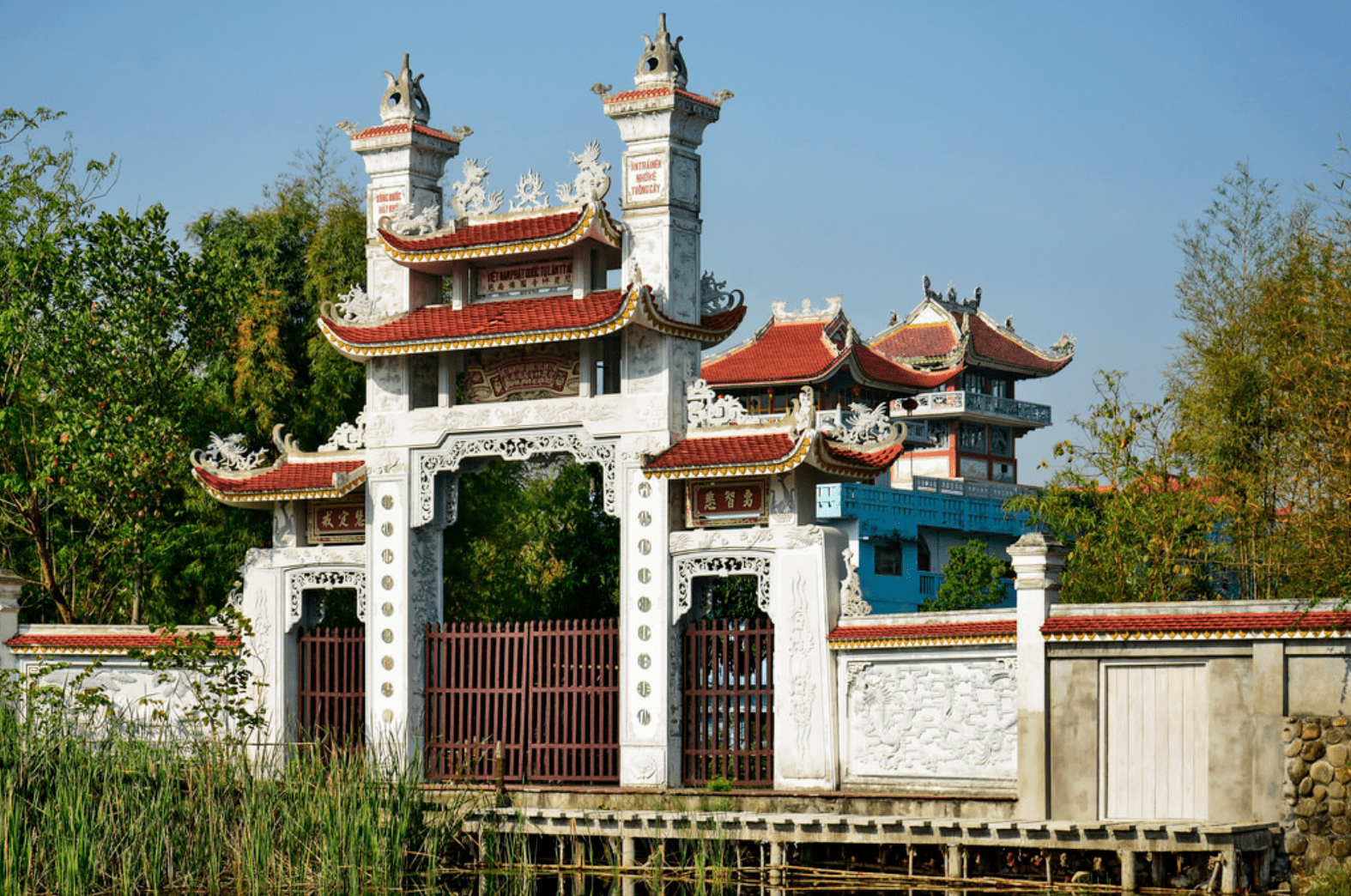
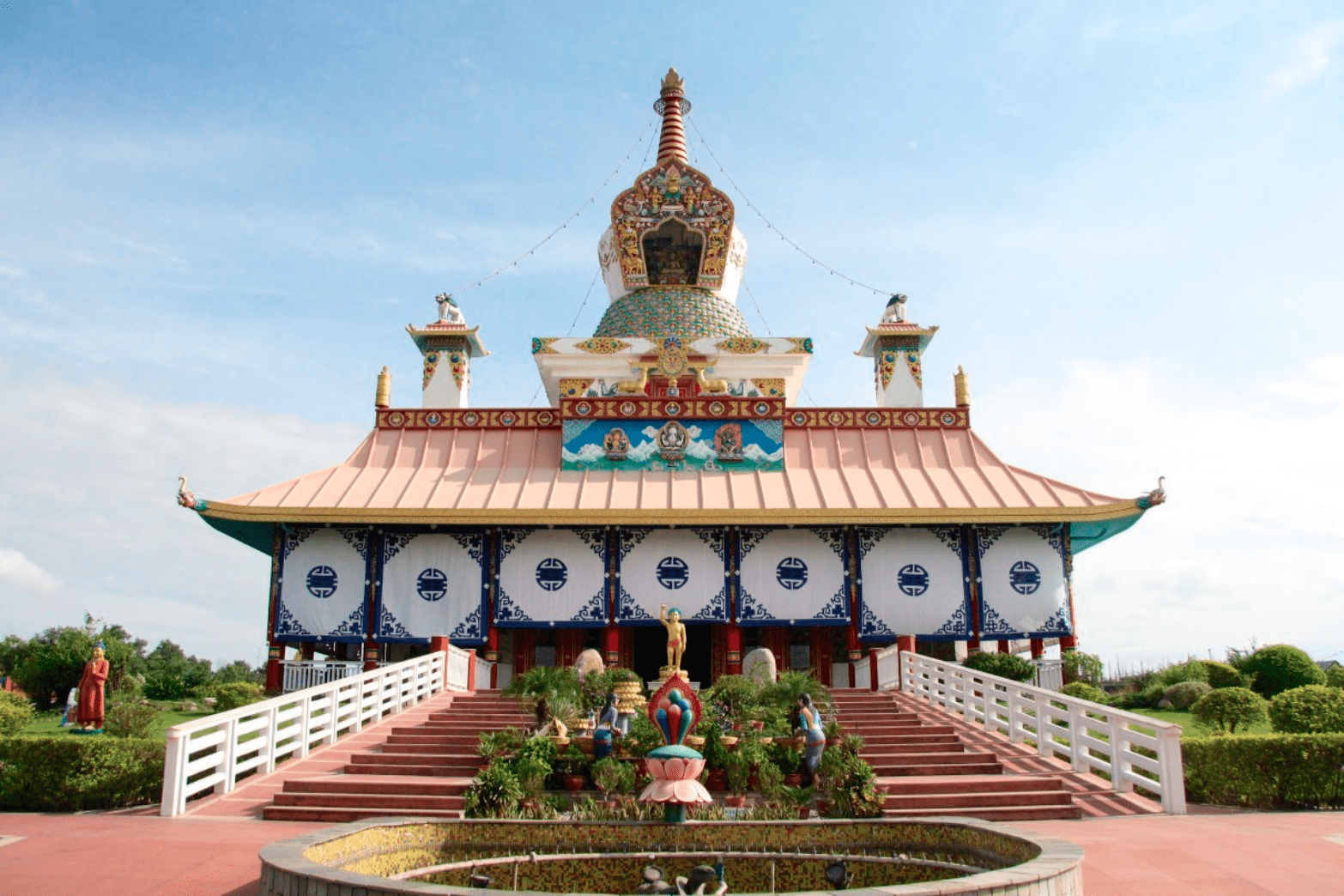
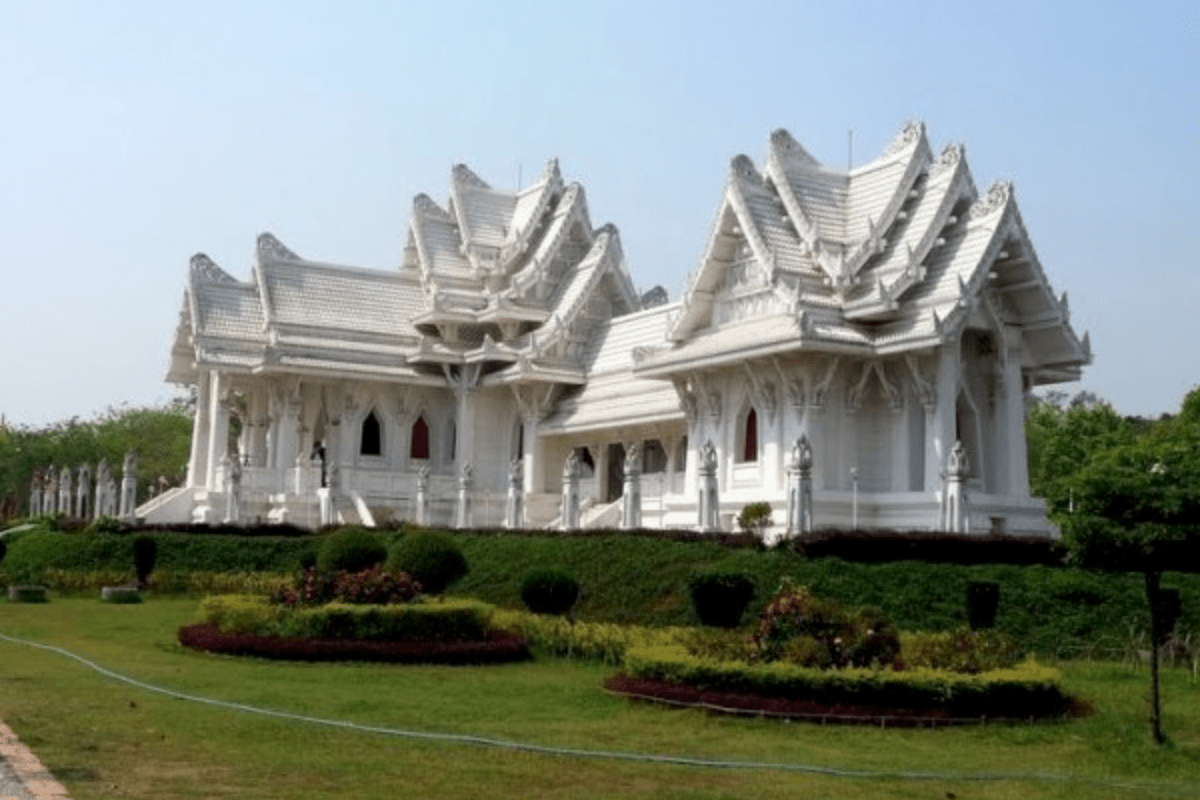
What are the Main Lineages of Buddhism?
Three primary branches of Buddhism: Theravada, Mahayana, and Vajrayana
3. Vajrayana Buddhism
The Vajrayana sect of Mahayana Buddhism, which is mostly practiced in Nepal, Tibet and Bhutan, meticulously follows tantric formalities, mantras and mudras. The worship can be quite elaborate with a hall for Lord Sakyamuni Buddha and two of his disciples and another hall for Lord Sakyamuni, Amitabh and Medicine Buddhas. In the course of transmission and adoption of Buddhism by the people of other civilizations, there were many mutual influences, for instance, between Buddhism and Confucianism and between Buddhism and Taoism in China. The original language of the Mahayana Canon was Sanskrit, which has been translated into the local languages such as Tibetan, Chinese and Japanese in the process of transmission. It is estimated that around 54% of Buddhists follow Mahayana school and 4% the Vajrayana sect.
What is the distribution of various branches of Buddhism in the world?
| Mahayana Eastern | 313 million | China, S.Korea, Japan, Taiwan, Singapore, Vietnam, Malasia |
| Theravada Southern | 150 million | India, Sri Lanka, Myanmar, Thailand, Cambodia, Laos |
| Vajrayana Northern | 18.2 million | Nepal, Tibet, Bhutan |
| Mixed | 7 million | Other Countries |
Relationship of Buddhism to Christianity?
